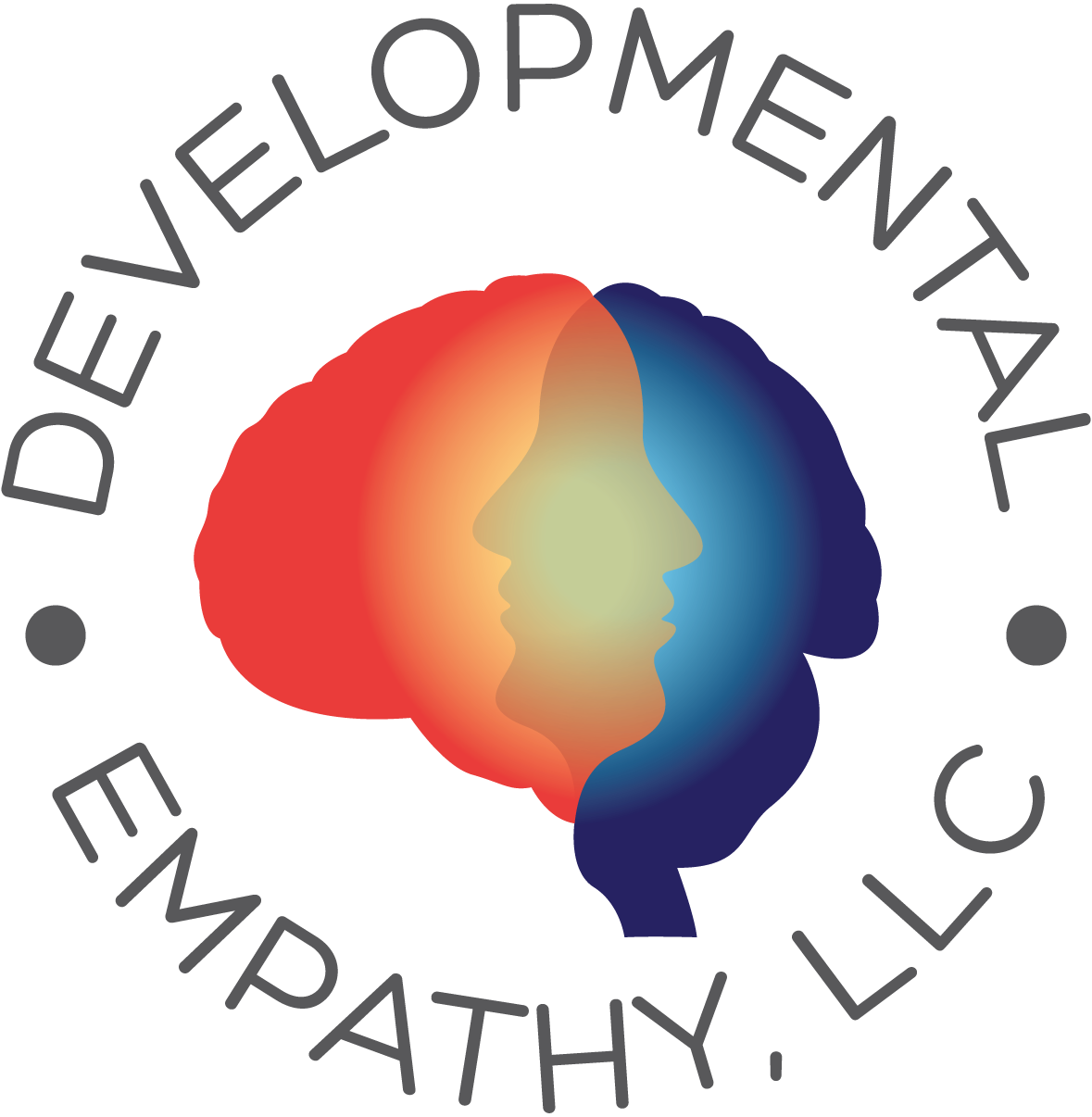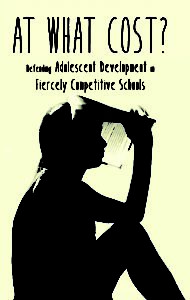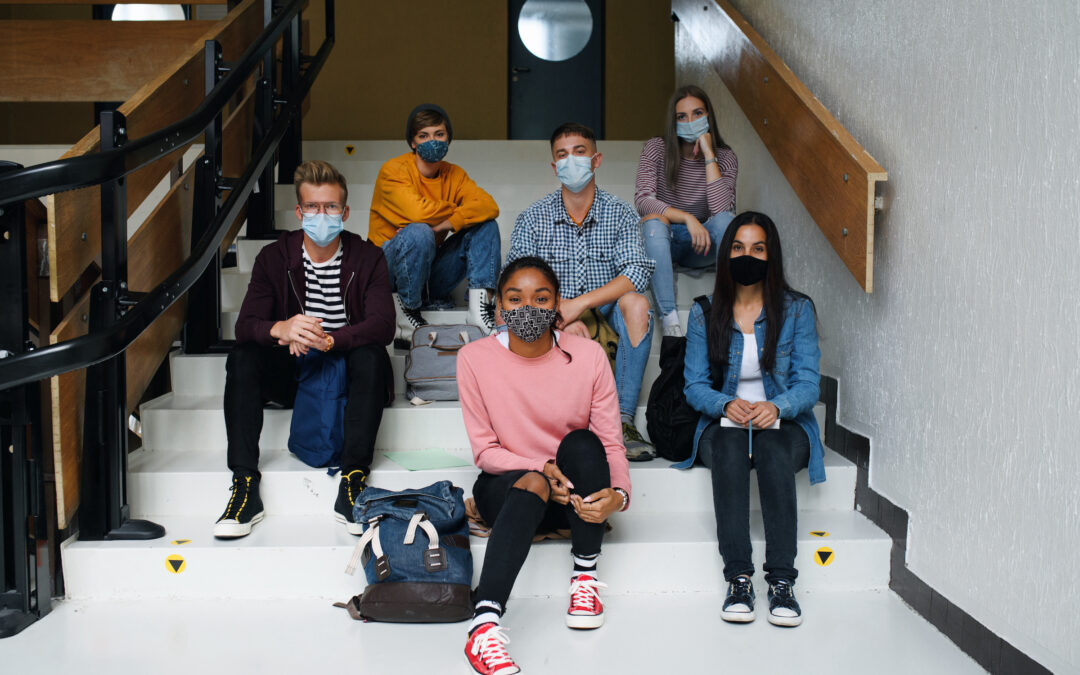
by David Gleason | May 27, 2021 | Blog
Asynchronous learning.
Synchronous learning.
Hybrid learning.
In early March 2020, these terms of how we teach students of all ages were nowhere near the everyday vernacular they are today. And then, disaster struck as a deadly virus quickly became a worldwide pandemic.
In very short order, schools and colleges worldwide changed dramatically. They made extraordinary changes, behaviorally and technologically, with how they taught and the overall presentation of their curricula. Every school changed how and what it taught. Teachers, administrators, parents, and students worked together. They collaborated when it wasn’t easy or comfortable, and, in most cases, they succeeded together. Schools and colleges everywhere should take great pride in how they have changed, how they adapted their teaching and learning in response to the pandemic.
As a worldwide community, we were alarmed and scared as our everyday lives were changing for the worse and there seemed hardly anything we could do to prevent it. In many ways, the world is still in a major and ongoing health crisis, one that communities and governments are working to combat.
Adolescents face another health crisis
Meanwhile – and closely associated with the pandemic – another major health crisis, one that has been growing for years, is picking up steam. “Clinicians and educators have witnessed the escalating rates of anxiety and depression among high-achieving youths,” writes psychologist Emily Esfahani Smith in the New York Times. “America’s decades-long trends of harsher competition, globalization, social media comparisons, endless striving on behalf of an uncertain future and scarce admissions to brand-name colleges have created a culture of fear and anxiety.” This year, the fear and panic of not being admitted to a college of one’s choice was rampant among U.S. high school seniors – and illustrated by Harvard’s lowest-ever admissions rate: 3.43% of its nearly 50,000 applicants.
Well before the stress and uncertainty caused by COVID-19, the CDC had documented the alarming rates of suicide – and suicidal ideation and self-harm — among adolescents:
- In 2018, suicide was the second leading cause of death for high school-aged youths (14-18 years) and accounted for approximately one-third of every injury-related death among this age group.
- Although suicide is a major public health problem, many more youths make suicide attempts and struggle with suicidal ideation. During 2018, data from emergency departments (EDs) show approximately 95,000 youths aged 14-18 visited EDs for self-harm injuries.
While it may not be considered as serious as the COVID-19 pandemic, adolescent depression and suicide is a psychological “epidemic” that has yet to be addressed.
In my book, At What Cost? Defending Adolescent Development in Fiercely Competitive Schools, I detail a number of ways in which the intense pressures and academic demands imposed on adolescents by the many adults in their lives – teachers, school administrators, and parents – are at the very center of why so many teens experience so much anxiety and depression and why so many tragically die by suicide.
Adults can help teens by changing school
Why am I making reference to the current pandemic as I talk about the psychological epidemic of teenage depression and suicide? The simple reason is this: Just as hundreds of millions of adults in schools around the world changed almost overnight in response to the pandemic’s threat to the health of their students, families, and selves, these adults have demonstrated that they can change – when they see a need to do so.
They don’t have to overschedule and overwork their students.
They don’t have to over-focus on the college admissions process almost from the time these now-adolescents were born.
They don’t have to treat adolescents like adults long before the teens have developed adult cognitive and emotional skillsets.
Mostly, these school adults don’t have to resist a developmentally reasonable schedule for their students because they fear being perceived as having lost their standards, as having lost their school’s distinctiveness, or worse, as having become a “vanilla school.”
My point is: educators, school administrators, and parents don’t have act in ways that put an unfathomable amount of pressure on kids such that they fall victim to anxiety, depression and suicide.
School adults and parents have clearly demonstrated their abilities to change when their very safety and lives were/are in jeopardy. Are they willing to continue with some of these changes as the pandemic slowly ends, so that adolescents can have academic, extra-curricular, and homework schedules that reflect the easing of pressure they experienced at the start of the pandemic?
At that time, again, because of the changes made by adults, adolescents had lighter schedules, less homework, fewer extra-curricular activities, and they got much more sleep! In many ways – at least initially – the pandemic led to a gift of time and to better overall health for adolescents everywhere.
Can we evolve to business as unusual?
As we slowly return to “business as usual” – to the harried life before the pandemic – can’t we start thinking of returning to “business as unusual” instead? To schedules and school expectations that are actually “in sync” with adolescents’ development?
How might synchronous and asynchronous approaches to learning be utilized to enhance the mental and physical health of our teenagers?
How might remote and hybrid learning methods serve the same purpose?
Across the country and around the world, we now have an entire cadre of teachers, administrators, and parents who’ve been “trained” in how to maximize these approaches for the betterment of their students and children. How can we now take full advantage of all that on-the-job training so that our students continue to benefit?

by David Gleason | May 19, 2020 | Blog
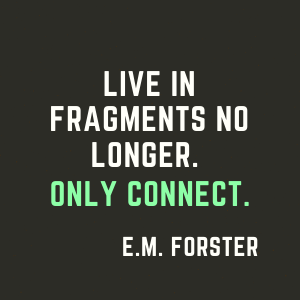
One of our deepest needs as human beings is for connection: to feel known, to feel understood, and to feel recognized and valued for who we are. However, in the social distancing culture of Covid-19, our experiences of – and opportunities for – human connection have not only become fragmented but in too many circumstances, they have totally discontinued.
For many educators and students in schools around the world, social distancing has led to unbearable states of disconnection, and thereby, to associated feelings of fear, loneliness, anxiety, and depression. In sum, this amounts to a series of unprecedented, collective, and ongoing experiences of loss and associated feelings of grief.
As I was reflecting on my own varying moods and feelings regarding these multiple losses, I was reminded of psychiatrist Dr. Elisabeth Kubler-Ross’s renowned Five Stages of Grief model. I first encountered and felt supported by these stages almost 30 years ago after the death of my father, but last week – quite unexpectedly – I realized how applicable these stages are for me now, too.
As I thought through these stages, I felt a surprising sense of relief as I realized that my fluctuating – and at times, very challenging – feelings felt somehow more understandable and tolerable, if not more “normal,” when considered within this useful theoretical framework. Even though these five stages were initially presented in a somewhat linear fashion – as if one doesn’t experience the feelings of Stage 2 until having endured or experienced the feelings of Stage 1 – this is not the case.
Since the initial publication of Dr. Kubler-Ross’s seminal work in 1969, practitioners and lay people alike have acknowledged how common it is to experience features of all five stages at different times, or even simultaneously, more like fluid “internal dynamics” of grief rather than linear and progressive stages. That was definitely the case for me.
In a recent Harvard Business Review (HBR) article, Scott Berinato explored these five stages of grief in the context of today’s coronavirus pandemic. To his summary, I have added brief descriptions of each stage and have paraphrased Berinato’s words here:
Denial: An initial refusal to acknowledge that the situation at hand is actually true (“Is this really happening?”)
Anger: Strong feelings of annoyance, frustration and irritation about the situation (“Our whole lives are so disrupted: We want to return to our normal lives!”)
Bargaining: Attempting to negotiate terms for a better outcome (“Ok, if we all shelter in place and maintain social distancing, we’ll be ok, right?”)
Depression: Prolonged … or intermittent … feelings of sadness, anxiety, and pessimism (“I’m so sad, and I don’t know when this whole situation will end.”)
Acceptance: Surrendering to the reality that this crisis is truly happening (“This is happening. I need to figure out how to proceed and adapt.”)
As you read through these five stages – or dynamics – of grief, you may identify, as I did, with these feelings and perhaps find some comfort in the realization that your feelings are both legitimate and typical. You are not alone. In fact, from much of the reading I’ve been doing throughout this crisis, I have observed that people all around the world are experiencing very similar feelings, confirming Dr. Kubler-Ross’s initial perception, if not her conviction, that these stages of grieving are universal.
Without a doubt, educators, students, and their parents everywhere are, collectively, experiencing multiple and simultaneous losses:
- the loss of not being able to gather together for classes and meetings;
- the loss of not being able to meet friends and colleagues for meals in school cafeterias;
- the loss of not sharing spring on the same campus;
- the loss of not being able to celebrate – in person – schools’ and colleges’ traditional and time-honored year-end rituals and ceremonies (proms and graduations, etc.);
- perhaps mostly, the deep loss of not being able to just hang out with each other.
To be sure, these are profound losses. Please be assured that it is absolutely normal and healthy to respond to these losses with the varied feelings and dynamics of grief they naturally evoke. In the words of Scott Berinato in the HBR, “If we can name it, perhaps, we can manage it.”
In my 30-plus years as a psychotherapist, a clinical phenomenon I have observed many, many times — and have come to know deeply — is that language – the “naming it” – is one of the greatest organizers of our emotional experiences. Why else do you think Sigmund Freud termed the process of psychotherapy as “The Talking Cure?”
As we continue to muddle through the coming weeks and months, my hope for all of us is that the language of these Five Stages of Grief can provide a useful emotional framework within which to understand, and perhaps, manage our feelings more effectively.
To conclude, I want to offer a message of hope. Another one of Dr. Kubler-Ross’s well-known quotations is this: “The most beautiful people we have known are those who have known defeat, known suffering, known struggle, known loss, and have found their way out of those depths.” [1]
As an experienced psychotherapist, I encourage you to make an effort to name your feelings. Further, try to acknowledge that while you are – as we all are – experiencing suffering, struggle, and loss, we also have the empathetic capacities within us to be gentle with ourselves and with those around us; to be kind and caring to ourselves and others, and to join forces with one another – even if by phone or online via Zoom or Skype – to “find our way out of those depths” together as we strive to live in fragments no longer, and only connect.
[1] Kubler-Ross, E., On Death and Dying. The Macmillan Company, New York, 1969

by David Gleason | May 13, 2020 | Blog
Ironically, in the Covid-19 pandemic, schools and families have been forced to make massive reactive changes, ones they could never have imagined had this crisis not occurred. While most of these new ways of living and learning are unsettling and distressing, I’ve observed glimmers of silver linings and perhaps some culture changes that may be worth holding onto.
Take, for example, one of the most frequently identified problems in high-performance, hyper schooling culture — the overscheduled nature of students’ everyday lives. I explored many of the negative consequences of this culture in my book, At What Cost? Defending Adolescent Development in Fiercely Competitive Schools.
The shift to online academics and halt of extracurricular activities have transformed students’ time, even in the most high-pressured school environments:
- academic schedules have been reduced because of the nature of constant online learning;
- grades in most schools and colleges have been changed to a pass/fail status;
- all extracurricular activities and after-school sports have been canceled.
Even the Advanced Placement exam has been transformed into an online 45-minute test that students take from home. Of course, this doesn’t remove the stress involved in studying and wondering what one’s score will be; that uncertainty remains.
Another aspect of students’ pre-pandemic lives linked to overscheduling was insufficient sleep. As I’ve said many times, chronic sleep deprivation – in adolescents and adults alike – manifests in a variety of unhealthy and dangerous ways, such as chronic anxiety, car accidents, and depression.
Now, however, with no early morning commute to school or several hours of extracurricular activities, many high school students are able to sleep more than the recommended eight or nine hours per night. One parent with whom I’ve spoken recently reported that her teenage son has been sleeping up to 12 hours per night on a regular basis. Consistent with an adolescent’s natural circadian rhythm, his sleep schedule is from 1:00 a.m. to 1:00 p.m.!
Further, as if it hadn’t already been popular, the practice of mindfulness meditation has probably never been more in demand. Because of heightened anxiety and stress levels about the pandemic, many students, teachers, administrators, and parents alike are turning to the practice of mindfulness to offset their hyper-aroused states of anxiety.
In each of the many webinars I’ve presented lately, I’ve polled participants about the stress they’re experiencing and observing:
- What signs of symptoms of stress are you observing in your colleagues or experiencing yourself?
- In what ways you have been trying to cope with your stressful feelings?
Most strikingly – but not surprisingly – is that “anxiety” has been the most frequently reported symptom of stress and that “spending more time with family and friends” has been the most frequently reported strategy for coping with this stress.
A Healthier Balance for Students and Families?
Is it possible that individuals and families are re-establishing old – but new to them now – habits of prioritizing time with family and friends over relentless hours of work? Although temporary at this point, are individuals and families striking a new and healthier balance between work and play or between work and relationships? According to Sigmund Freud, “Love and work are the cornerstones of our humanness!” Could it be that a silver lining is emerging from this world-wide crisis — that we are reconnecting with a healthier balance between “love and work?”
While this new balance certainly has its downsides – students are missing in-person interactive class discussions and socialization; graduating seniors are missing out on traditional and time-honored rituals and celebrations; and social distancing has led to increased social isolation, anxiety, and loneliness for many – there may still be aspects of this massive period of change that may be worth keeping and continuing.
As this pandemic and its restrictive living conditions continue for the near future, at some point, we need to ask ourselves how much of the pre-pandemic “status quo” do we want to return to? How will the future of education and work-life balance unfold in light of the massive changes that schools, businesses, and families around the world have had to make?
Once communities and schools begin to reopen, will we – administrators, teachers and parent — strive to keep our students “developmental integrity” in mind or will we rush back to the overscheduled and sleep-deprived conditions that characterized children’s and adolescents’ lives just a few months ago?
Maybe the hyper-schooling culture of the past doesn’t have to be so “hyper” after all? Maybe courses – even AP and IB courses – can be taught in such a way that both deliver meaningful content and allow students to get the sleep they need for their health and wellbeing. Maybe students could be granted more unstructured time, time we now know from neuroscience that students need not only to socialize with one another but also to rest, dream, and imagine their futures.
While we have always been responsible for the cultures we have created, over the past few months, we have had to create an entirely different culture – one that is certainly challenging, often filled with anxiety and not sustainable for the long run. However, this new culture may have a few silver linings that may be worth keeping.
As a colleague noted in a recent video meeting of professionals, “This crisis is not the end, it is a pause.” [1] We adults are still responsible for the cultures we create. Now that we’ve made massive changes not only to how we educate our students, but also how we’re living our own lives, once this pandemic-induced pause is behind us, I welcome your thoughts and ideas:
What surprisingly joyful or positive encounters have you experienced or witnessed that may be worth keeping or continuing?
How might we begin to imagine living and learning more broadly?
What matters most to you?
[1] https://www.mobiusleadership.com/executive_team/catherine-a-cotins/

by David Gleason | Dec 18, 2018 | Blog
In an article last month, “Louisiana School Made Headlines for Sending Black Kids to Elite Colleges,” the New York Times revealed that administrators and other educators at T.M. Landry College Prep colluded in an extensive scheme to get their students admitted to elite colleges. These school officials exploited their students’ racial and economic status for their own financial gain.
According to the New York Times, “the school falsified transcripts, made up student accomplishments and mined the worst stereotypes of black America to manufacture up-from-hardship tales that it sold to Ivy League schools hungry for diversity.”
School officials physically, verbally, and emotionally abused many students who tried to resist cooperating with their fraudulent school administrators and teachers. They allowed students, many of whom were in fact already admitted to elite schools, to experience the unbridled joy of having “made it” (there are many viral videos of such celebrations). And almost inevitably, they set their students up for failure and humiliation when, once admitted and entering these colleges on false representations, they could not actually function as “advertised” in their fictitious college applications. Many, in consequence, dropped out.
It is worth noting that that the subtitle to my book “At What Cost?” is “Defending Adolescent Development in Fiercely Competitive Schools.” Everything about T.M. Landry College Prep’s fraudulent schemes for sending black kid to elite colleges — beyond being profoundly unethical and even criminal — underscores the potentially maniacal pursuit of “getting into Harvard.” While some of these T.M. Landry College Prep students may, in fact, have been qualified for admission to elite colleges, the majority of those featured in the New York Times article were not.
For those students, having been led to believe that they were more academically prepared than they actually were – for the sole purpose of obtaining admission to an elite college – was both misleading and cruel.
Acting with the Very Antithesis of Developmental Empathy
Essentially, T.M. Landry College Prep officials took full advantage of these students’ still-developing identities – their hopes and dreams, and their very senses of self as they were then – and are now – still developing. The result was the very antithesis of developmental empathy. Indeed, the result was the very antithesis of education.
If all that wasn’t bad enough, perhaps the most ruthless aspect of this “new and appalling extreme” is that it deviates completely from all of the administrators and educators with whom I have met and interviewed for “At What Cost?”
Throughout my extensive research in public, independent and international schools over the past several years, the adults – administrators, educators and parents alike – exhibited extraordinary honesty and integrity as they fully acknowledged the binds they were – still are – experiencing. While they all intend to educate their students in healthy, safe, and balanced ways, due to unprecedented economic and cultural forces, they also find themselves, unwittingly, overscheduling, overworking and, at times, overwhelming their students.
Make no mistake: this is a bind that unsettles and alarms these caring and honest adults, a bind that, once acknowledged, motivates them to work together to generate more developmentally empathic practices for educating with their students.
What T.M. Landry College Prep apparently does is take that bind to extremes, arguably logical ones. After all, if the aim is to ensure that students—at all costs—are accepted into elite schools, we have an unsettling example of what it takes for that to happen.

by David Gleason | Oct 22, 2018 | Blog
“We are responsible for the cultures we create.” I first heard this phrase as a young psychologist working at St. Paul’s School in New Hampshire, when Dr. Dan Garvey, then Vice President of the American Youth Foundation, spoke to a group of newly-appointed boarding school proctors (student resident assistants) in a leadership training workshop we were leading.
Dan’s message to those high school juniors reflected just one of his efforts to recruit this group rising student dorm leaders to a positive, supportive, and affirming leadership style, one that we hoped they would practice with the younger students in their dormitories the following year. I have never forgotten that statement, and it has been one of my own guiding principles throughout my career.
A few weeks ago, the entire country watched the excruciating testimony of Dr. Christine Blasey Ford as she made formal allegations of sexual assault against Supreme Court nominee, Mr. Brett Kavanaugh, an event that quickly devolved into a “she said – he said” dispute.
What was particularly striking to me was that this excruciating testimony and counter-testimony was exclusively about two middle-aged adults recalling their high school years. As the testimony detailed, these sexual assault events and associated drinking episodes are alleged to have occurred when Christine Blasey was 15 and Brett Kavanaugh was 17. Further accusations surrounded early college years for Brett Kavanaugh.
The point I’m making here, regardless of whether there is definitive proof of any accusation, is that a national drama has unfolded in 2018 about a group of teenagers from 1982. So how does “We are responsible for the cultures we create” apply to this situation?
Regrettably, it seems that we adults – regardless of our politics – have created a culture that has both enabled boys and men to assault women while simultaneously coercing, if not threatening, girls and women to keep silent.
This culture is most evident today in the “Me Too” movement and the cases against public figures such as Bill Cosby and Harvey Weinstein. What might be the implications of such a culture when a subset of those individuals living within it are teenagers? Basically, this so-called “culture” is the only one in which teenagers have been living and navigating for many years.
Adults Have Created Toxic Culture for Teenagers to Navigate
Furthermore, it is a culture that was not designed or “created” for teenagers, but rather, it has been schemed – and thus, created – by adults. Therefore, it is one for which the adults – we — are responsible. Consistent with what I write in At What Cost? Defending Adolescent Development in Competitive Schools, the world of teenagers – the culture we have created – is fiercely competitive. It is a world in which privileges frequently amass for the few and in which inequality, unfairness, and too often, injustices ensue for many others.
This often-toxic culture that we adults have schemed for ourselves is the context in which our kids have been developing. After all, it is their world, too, and they grow into it for better or worse.
Further, as we have seen, the effects of this culture often endure even when the culture itself changes. So, in 2018, while this “culture” no longer fosters the kinds of behavior that it did in the early 1980s (this does NOT mean that bad stuff doesn’t still happen); the effects of that culture then and its impact on its then-developing teenagers, is obviously still with us. The characters in this drama, after all, are now in their fifties.
As those familiar with my work know, the unmistakable focus of my recent book, At What Cost? is on how the high-pressured and ultra-competitive conditions that characterize millions of teenagers’ high school experiences now have the potential of harming those teens not only now, but for many years in the future. For example, we now know that the high-pressured and competitive conditions of today often lead to adolescents’ experiences of intense anxiety and overwhelming depression, conditions that frequently manifest as substance abuse, eating, and self-injury disorders, all of which can last for many years into adulthood.
Most of us can likely identify adults in our families and/or communities today whose alcohol problems, eating disorders, and/or chronic anxiety and depression conditions began when they were teenagers.
What does this mean for us now?
The more that today’s adolescents act out their powerful, unedited, and impulsive feelings in self-destructive and/or aggressive – including sexually aggressive – ways, the more we, the adults who parent and educate them – must consider the “cultures WE have created.”
Sadly, in this national fiasco between Christine Blasey Ford and Brett Kavanaugh, we have had a tendency to cast blame on these middle-aged adults, solely, as if the environments in which they were reared and educated – the educational and social contexts of their adolescent lives – did not also play a role in how this all may have come to be.
Thanks to discoveries of neuroimaging, we now know that environment shapes the brain.
From that standpoint, it is absolutely impossible for anyone, in any setting or environment, to undergo typical brain development separated or detached from the very physical and psychological contexts of their everyday lives.
Of course, Christine Blasey Ford and Brett Kavanaugh – as teenagers – were implicated in the contexts in which they were raised.
What this means for us today is that these physical and psychological contexts—the cultures we are creating now—influence kids not only now but into the future, because our adolescents are developing their very “selves” within them. Our adolescents are vulnerable to the cultures we have created – are still creating – within which they are developing. WE are responsible for that happening.
In my many years of clinical work, I have focused on empathizing with adolescents – and when necessary, on trying to defend them. I know enough about their still-developing brains to understand that their age-related vulnerability renders them susceptible to – and at times, defenseless against – their own powerful and unedited emotions. Further, I know that their oft-times associated, impulsive behavior – is behavior in which they simply wouldn’t engage if their brains (specifically, their prefrontal cortices) were more fully developed.
Brain development happens regardless of the particular cultures within which our adolescents develop. What we, adults, are nevertheless responsible for is ensuring that these vulnerabilities are not intensified, that they are not exacerbated, by our own adult choices, fears, excuses, and unexamined assumptions.
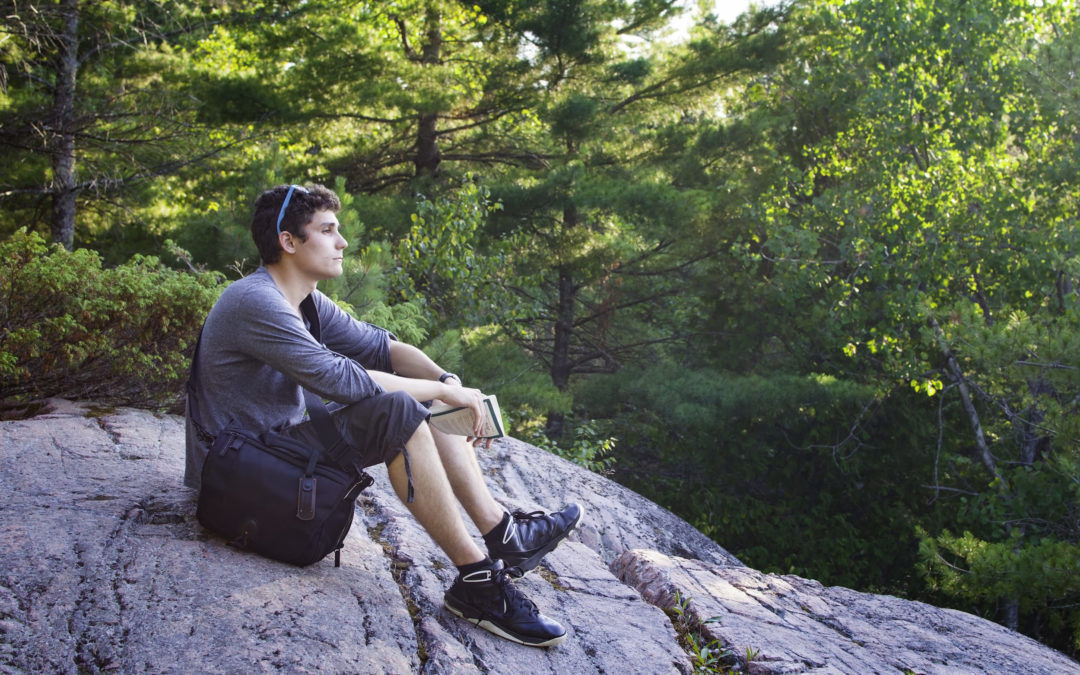
by David Gleason | Sep 24, 2018 | Blog
Due in large part to the ultra-competitive culture that has characterized the current generation of students since preschool, many students are extremely overscheduled, and consequently, feel stressed and pressured to succeed in everything. As a result, they often experience intense feelings of anxiety, frustration, helplessness, and depression.
One of my adolescent clients, Spencer, a recent high school graduate, articulated what caused her the most stress during high school:
“It wasn’t just one thing, it was always about four or five things that were happening all at once! …On the same day that I would have a big math test, I’d also have a history paper due, a presentation to give in English class, and then an away track meet that would take all afternoon and into the evening. …Then I would get home to do a ton of homework that would be due for the very next day. This kind of schedule basically defined my entire high school experience.”
In my clinical practice working with adolescent clients for more than 25 years, I have observed that Spencer’s experience has become more the rule than the exception.
Over the past decade, I have treated so many adolescents who have been chronically sleep-deprived and anxious, teens whose persistent anxiety has led to associated behavioral troubles, including substance abuse, eating disorders, cutting, self-injury, and too frequently, suicide.
In my book, At What Cost? Defending Adolescent Development in Fiercely Competitive Schools, http://bit.ly/2EryYOf I detail several key developmental and neurobiological reasons why overscheduling children and adolescents can be so detrimental, if not utterly dangerous. Since my book was published in 2017, I have learned of yet another neurobiological reason why overscheduling students isn’t just detrimental to their still-developing status, but also can interfere with their maturing social-emotional and executive control capacities — both fundamental necessities for all students’ current and long-term health and development.
Overscheduling Interferes with Healthy Brain Development
Specifically, I have learned that within the ever-expanding body of compelling neuroscience research, “one major advance shows how the brain’s Default Mode Network supports social-emotional feelings and broader thought patterns associated with self-processing, identity, meaning-making, and future-oriented thought.” [1]
In an earlier blog post, “Does More ‘Free Time’ Mean More ‘Screen Time’ for our Students,” http://bit.ly/2NjGNL7 I advocated that we — parents, teachers, and administrators — offer students more “free time” as a way to help them compensate for their frenetic daily schedules. I emphasized that, in order to prevent students from simply engrossing themselves in their cell phones, we also need to be more explicit about how they can use this free time in ways that promote health and well-being.
The discovery of the brain’s Default Mode Network provides additional and incontrovertible neurobiological evidence for why students need to have more unstructured time — it is as basic a human developmental need as getting enough sleep, exercising regularly, and eating a balanced diet.
Key Brain Network is Most Active When We’re Not Engaged
Among the many interrelating networks within the brain, “the most metabolically expensive core brain areas are organized into a grand network whose activity and connectivity are broadly associated with neural and mental health, intelligence and memory skills. This grand brain network, called the Default Mode Network (DMN), engages regions not only in the brain’s core but also in key lateral parietal areas.” [2]
Perhaps most importantly, “The DMN was named for the fact that its component brain regions become highly active and functionally connected only when people daydream or wakefully rest in the fMRI scanner, compared with when they perform demanding cognitive tasks.” [3]
As researchers have queried, “How could the brain’s most metabolically expensive regions be more active when people are resting?” [4]
After about 15 years of research, “scientists now broadly accept that these coordinated DMN activations are critical for psychological functioning, especially for mind states that move the thinker out of the physical, visible, actionable specifics of the here-and-now. The Default Mode Network is heavily recruited during all sorts of tasks that involve internally directed, interpretive, and reflective thought, for example, when remembering past experiences, imagining hypothetical or future scenarios, or deliberating on inferred, abstract, or morally relevant information.” [5]
Research has “unequivocally shown the DMN is not equally active all the time. Instead, the DMN seems to trade off with brain networks that support outward attention, physical action and instrumental task orientation.” [6]
Further, “The DMN will be relatively quiet and inactive when people engage in mental activities with short-term, context-specific goals, such as solving math problems, listening to a teacher’s instructions, playing sports or action video games, or checking their cell phones. These tasks deactivate the Default Mode Network because they require outward perceptual attention.”[7]
Therefore, “The neural networks responsible for maintaining and focusing attention into the environment and engaging in finite, task directed, and physical activity toggle with the default mode network.
These two modes of attention – inward reflection supported by the default mode network, and outward attention, perception, and action – do NOT normally co-activate. This means that it is not neurologically possible to simultaneously devote full attention to completing one’s current tasks while also reflecting on the broader meaning of these tasks now and into the future.” [8]
Lack of Down-Time Hinders Students’ Brain Development
Those of us dedicated to educational practice and policy today must then ask: “How could going back to school … and thereby, losing long periods of free or unstructured time ….be considered a major loss for many students?”
Essentially, since the brain’s Default Mode Network is only activated during periods of free and unstructured time, in the currently overscheduled and frenzied environment within fiercely competitive schools, “relentlessly demanding students to focus in the here-and-now on completing the [multitude of] concrete tasks assigned to them could undermine students social-emotional meaning making, identity development, conceptual understanding, and ultimately, their long-term academic success.” [9]
The logical conclusion, according to Mary Helen Immordino-Yang and many other neuroscience researchers, is that “consistent with common sense and a focus of current research, is that educational environments that overly focus on task orientation and quantitative measures of success such as test scores and grades may sometimes increase achievement and productivity in the short-term by focusing teachers on what works now and [by focusing] learners on completing concrete tasks for near-term rewards. But, overly strong task/testing orientation may inadvertently undermine genuine meaning making, critical thinking, creativity, and well-being over time, leading students to lose (or never to build) intrinsic motivation, resilience, and personal connection to [their] academics and scholastic achievement.” [10]
In her concluding remarks to this important article, Immordino-Yang states, “In sum, corroborating classic education research on how people learn, new evidence on brain functioning suggests that many of the mainstream educational practices meant to increase productivity and accountability may be incompatible with how the brain works and how people think, and could inadvertently undermine student achievement and life success. The evidence backs up what last century’s wise teachers could have told you: Young people need downtime, reflection time, and strong social relationships to learn optimally. [11]
To be sure, “Schools are designed to teach specific procedures and semantic content. But pushing students’ hard work in the moment … without supporting the broader psychological and neurological landscape of the developing person … is misguided, because it fails to help students more adaptively interpret their educational experiences in terms of their own identity development and possible futures.”[12]
We — the adults who to one degree or another, are complicit in adding stress to young people’s lives — need ourselves to reflect on these findings.
[1] Immordino-Yang, M.H. (2106). Emotion, Sociality, and the Brain’s Default Mode Network: Insights for Educational Practice and Policy. Behavioral and Brain Sciences, Vol.3(2) 211-219.
[2] Buckner, R.L., Andrews-Hannah, J.R. & Schacter, D.L. (2008). The brain’s default network: Anatomy, function, and relevance to disease. Annals of the New York Academy of Sciences, 1124, 1-38.
[3] Raichle, M.E., MacLeod, A.M., Snyder, A.M., Powers, W.J., Gusnard, D.A., & Shulman, G.L. (2001). A default mode of brain function. Proceedings of the National Academy of Sciences of the United States of America, 98, 676-682.
[4] Ibid
[5] Immordino-Yang, M.H, Christodoulou, J,. & Singh, V. (2012). Rest is not idleness: Implications of the brain’s default mode for human development and education. Perspectives on Psychological Science, 7, 352-364.
[6] Fox, M.D., Snyder, A.Z., Vincent, J.L., Corbetta, M., Van Essen, D.C., & Rachle, M.E. (2005). The human brain is intrinsically organized into dynamic, anticorrelated functional networks. Proceedings of the National Academy of Sciences of the United States of America, 102, 9673-9678.
[7] Immordino-Yang, M., McColl, A., Damasio, H., & Damasio, A. (2009). Neural correlates of admiration and compassion. Proceedings of the National Academy of Sciences of the United States of America, 106, 8021-8026.
[8] Immordino-Yang, M.H. (2106). Emotion, Sociality, and the Brain’s Default Mode Network: Insights for Educational Practice and Policy. Behavioral and Brain Sciences, Vol.3(2) 211-219.
[9] Immordino-Yang, M.H. (2106). Emotion, Sociality, and the Brain’s Default Mode Network: Insights for Educational Practice and Policy. Behavioral and Brain Sciences, Vol.3(2) 211-219.
[10] Ibid
[11] Ibid
[12] Ibid

